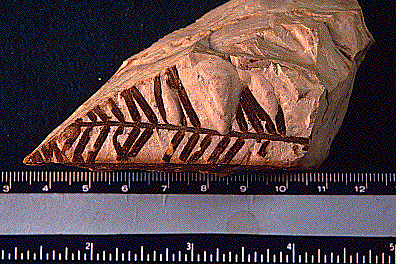Contents Compressions
|
What are compressions ? A compression is a two dimensional remain, that has been compressed
from a three dimensional organism. Compressions are the organic remains
from the distortion of the original morphology. Compression mainly occurs
in plants, retaining coalified organic matter. Carbonization and distillation
are two types of compressions in which carbon residue retains many of the
features of the original organism. In carbonization, the What do compressions tell us ? Compressions provide important information concerning the external morpholog especially the planar structure of organisms (such as the leaves of plants). In plants the cuticle is often preserved, providing cellular information of the plant. Most compressions are found around coal seams, such as the Jurassic flores of Robin Hood's Bay in Yorkshire. Carbonization fossils have revealed evidence of the vast swamps containing luxuriant forests in particular areas, such as today's China, India, Australia, Africa, North America and parts of Europe. These remains constitute the base of today's vast coal deposits.
Index Amber || Casts & Molds || Compactions || Compressions || Coprolites & Gastroliths Drying & Dessication || Freezing || Impressions || Molecular Fossils || Permineralization
|
 decompostion
of organic matter under anaerobic water or sediment, the hydrogen, oxygen,
and nitrogen are driven off, leaving the carbon residue. In the rare process
of distillation, only the more volatile elements, such as liquids and gases
are distilled. This leaves a thin film layer of carbon on a rock as evidence
of the original organism. The uniqueness of distillation is that both hard
and soft parts can be preserved.
decompostion
of organic matter under anaerobic water or sediment, the hydrogen, oxygen,
and nitrogen are driven off, leaving the carbon residue. In the rare process
of distillation, only the more volatile elements, such as liquids and gases
are distilled. This leaves a thin film layer of carbon on a rock as evidence
of the original organism. The uniqueness of distillation is that both hard
and soft parts can be preserved.